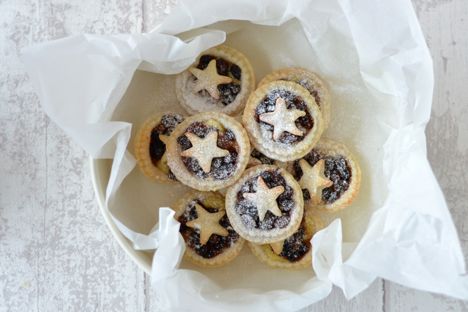
A very traditional Christmas: the origins of our favourite foods
We take a look at the history of Britain's most popular festive foods and why they're always associated with Christmas feasting.
A very traditional Christmas: the origins of our favourite foods
We take a look at the history of Britain's most popular festive foods and why they're always associated with Christmas feasting.
While some of our traditions can be traced backed to pagan times, it’s the Victorians who really gave birth to the traditional Christmas as we know it. Charles Dickens in particular was the one who spread the idea of a Christmas dinner, with a roast bird, all the trimmings and a pudding on the table. But there are all sorts of influences from different periods in history that have helped make Christmas what it is today.
Turkey
We eat over ten million turkeys at Christmas in the UK, and even though there’s always someone complaining about the meat being dry or bland, it’s a firm favourite across the country. But where does the association between turkey and Christmas come from?
Traditionally, it was a goose that got the chop at Christmas. People were reluctant to slaughter their cows for beef, as they could produce milk throughout the year, while chickens produced eggs and were very expensive. Geese only laid eggs seasonally, so they were fattened up and eaten for Christmas. More wealthy families were known to eat wild boar or even peacock as well! While legend has it that Henry VIII was the first person to eat a turkey on Christmas Day, it wasn’t until Victorian times that it became more common. By that time families were getting bigger and bigger and a goose just wasn’t big enough to go around. More turkeys were imported from America, but it wasn’t until the mid-twentieth century that they became more popular than the traditional goose.
Spices
Look in an avid baker’s storecupboard at Christmas and you’re bound to find cloves, cinnamon, nutmeg and ginger. These spices make an appearance in all sorts of festive dishes, and we have the soldiers who fought in the Crusades to thank; they brought back both the spices and the style of combining them with dried fruit and meat. Traders – particularly the Venetians – saw how popular these exotic delicacies were, and began setting up spice routs between Europe and the east. At first they were so valuable many people used them as currency, but by the nineteenth century they had become slightly more affordable. They were still saved for only the most important celebrations, however – particularly Christmas.
Christmas cake
The Christmas cake we all know and love today originates from a cake made for and eaten on Twelfth Night (5 January), which was when the three wise men arrived in Bethlehem to see baby Jesus. The use of spices was supposed to symbolise the gifts the three men brought with them, while almonds and dried fruit were a rare sweet treat in the colder months. However, in the 1640s Oliver Cromwell and the Puritans banned feasting of any kind on Twelfth Night, so people started to make it on Christmas Day instead, when a little merriment was permitted. The recipe changed slightly and the almonds were eventually replaced by marzipan in Victorian times, when it became fashionable to decorate the cake to look like a snow-covered landscape (which accounts for some of the kitsch cakes we see today).
Christmas pudding
This speciality began life as something called plum porridge (first referenced in 1573), a pretty unappetising sounding dish made from beef shin, spices, sugar and fruit, boiled in a broth and reduced until gelatinous. It was eaten on Christmas Eve after fasting, and then stored for weeks afterwards (back then people believed if something jellified it was good to eat for a long time). By the 1800s, ways of preserving meat had improved and the porridge started to become less savoury. The first recipe to resemble the Christmas pudding we know today appeared in the 1830s, as a combination of flour, fruit, sugar and spice, with plenty of suet in as a nod to the original beef shin. The tradition for making the mixture on the first Sunday of advent – known as Stir-up Sunday – came soon after.
Brandy butter wasn’t officially mentioned until the 1930s (around the same time it became more commonplace to pour alcohol into the pudding itself), but a similar delicacy called rum butter has been a speciality in Cumbria since the nineteenth century.
Mince pies
Yet another example of the tradition of mixing meat with dried fruit and spices brought over from the Crusades, mince pies listed minced beef as an ingredient up until the nineteenth century. They used to be much bigger, made to serve crowds of around twenty people, and were rectangular to symbolise Jesus’ crib. Once sugar became more accessible and cheaper to the average cook, mince pies lost their savouriness, although lots of beef suet was still used for an extra rich flavour. This meant they would last longer, so bakers started to make them bite-sized.
Yule log
The roots of this rolled chocolate sponge go way back to the Iron Age, when Celts would burn huge decorated logs to celebrate the winter solstice. After Christianity swept across the UK the tradition continued, but as houses and fireplaces got smaller burning a giant log became harder and harder. At some point someone decided to bake a cake in their hearth in the shape of a log instead of burning a real one, and the Yule log cake was born. It became popular across Europe in the nineteenth century, after Parisian bakeries started making and decorating them to place in their shop windows.


